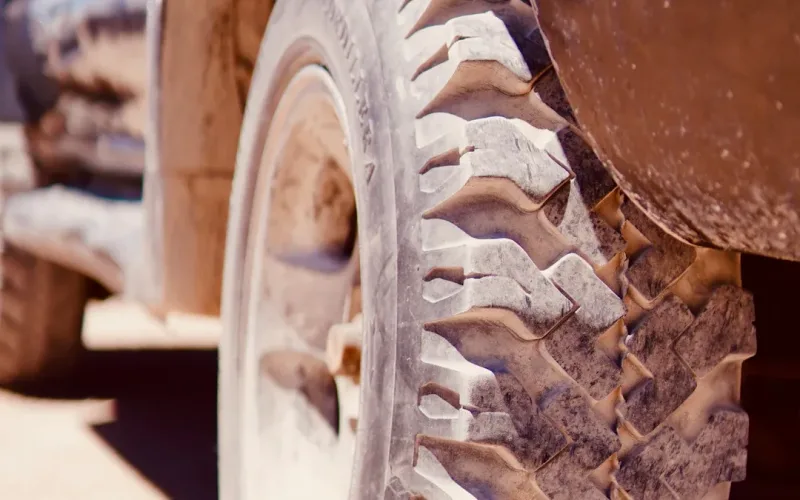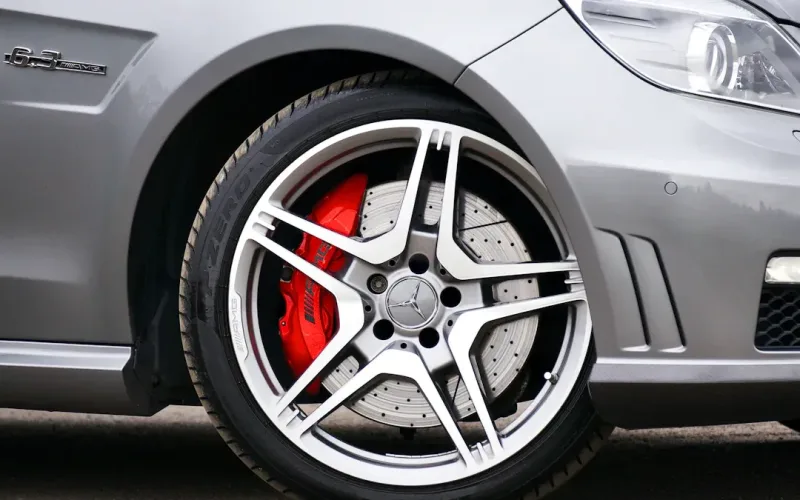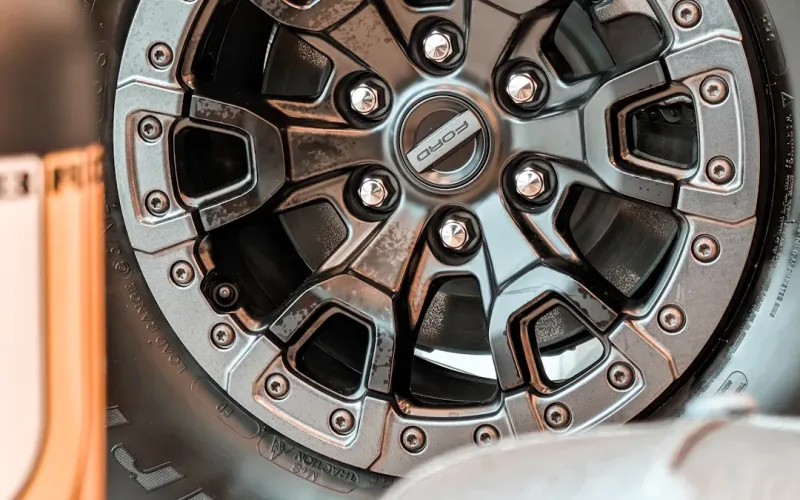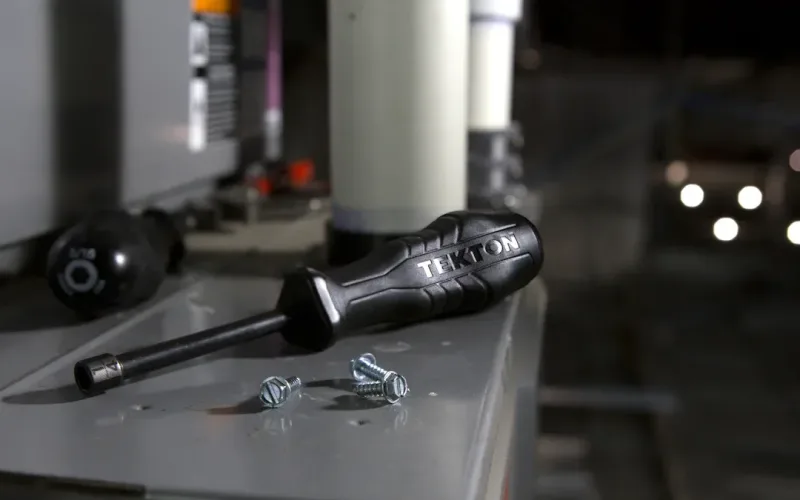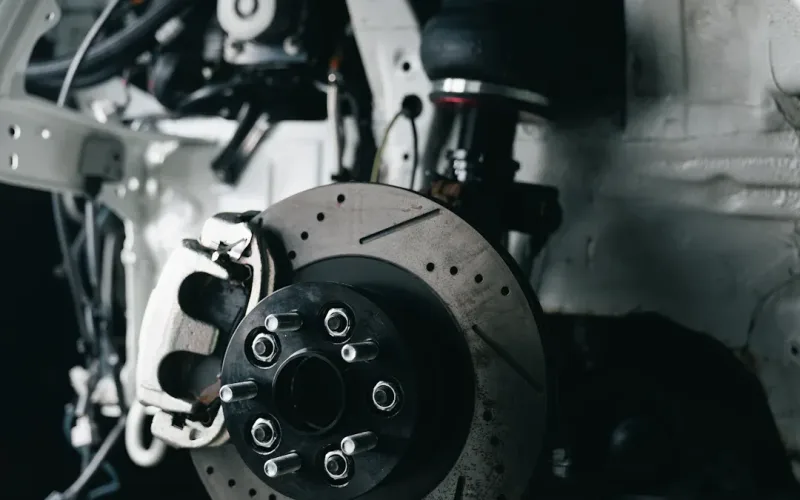

admin1
May 16, 2025
The Hidden Environmental Costs of Lead Wheel Weights

Lead wheel weights often go unnoticed, yet they leave a significant environmental footprint. When these weights detach from vehicles, they accumulate on roadways. Research reveals that Melbourne roadways alone bear an annual lead load of 10.9 tonnes, with 10.3 tonnes in intact pieces and 0.6 tonnes as particulates. These fragments can leach into soil and water, polluting ecosystems. The average residence time of these weights on roads is 38.1 days, giving them ample opportunity to spread contamination. Transitioning to safer alternatives is crucial to protect both the environment and public health from the toxic effects of wheel lead weights.
Understanding Lead Wheel Weights
Purpose and Function
Wheel weights play a crucial role in vehicle performance. You might not notice them, but they help balance your car’s wheels. When a wheel is unbalanced, it can cause vibrations, uneven tire wear, and reduced fuel efficiency. These small weights, attached to the rim of your wheels, ensure smooth rotation and a safer driving experience. Without them, your vehicle’s handling could suffer, especially at higher speeds. By maintaining balance, these weights also extend the lifespan of your tires and improve overall driving comfort.
Composition and Toxicity
Traditionally, many wheel weights have been made from lead due to its density and malleability. Lead is effective for this purpose because it is heavy and easy to shape. However, it poses serious environmental and health risks. When lead wheel weights fall off vehicles, they often end up on roadsides. Over time, they break down into smaller particles, contaminating soil and water. Lead is highly toxic to humans and wildlife. Even small amounts can harm ecosystems and cause long-term health issues, such as neurological damage in children. This makes the continued use of lead-based materials a significant concern.
Alternatives to Lead-Based Materials
Safer alternatives to lead wheel weights are now widely available. Manufacturers have developed weights made from materials like steel, zinc, and even plastic composites. These options are less harmful to the environment and still perform effectively. For example, zinc weights are corrosion-resistant and recyclable, while steel weights are durable and cost-effective. By choosing these alternatives, you can help reduce the environmental impact of wheel balancing. Many countries and industries are already transitioning to these safer materials, setting a positive example for others to follow.
Environmental Impact of Lead Wheel Weights

Contamination of Soil and Water
When lead wheel weights fall off vehicles, they often end up on roadsides, where they gradually break down into smaller particles. These particles can seep into the soil, contaminating it with toxic lead. Over time, this contamination can spread, affecting nearby plants and microorganisms. The Environmental Protection Agency (EPA) has found that while lead wheel weights contribute minimally to residential lead exposure, they still pose a risk to soil quality, especially in areas close to busy roads.
Water bodies are also at risk. Rainwater washes lead particles from roads into streams, rivers, and lakes. Seasonal studies have shown fluctuating lead levels in water. For instance:
- In spring, lead concentrations reached 0.22 ± 0.01 mg/L at one site and 0.06 ± 0.03 mg/L at another.
- In summer, levels dropped to 0.09 ± 0.01 mg/L at the first site but rose to 0.24 ± 0.08 mg/L at a third location.
These numbers highlight how lead contamination varies but remains a persistent issue. By switching to safer alternatives, you can help reduce this harmful impact on soil and water.
Effects on Wildlife and Ecosystems
Lead contamination doesn’t just stay in the soil or water—it spreads through ecosystems, harming wildlife. Animals often ingest lead particles while foraging, mistaking them for food. Birds, for example, may consume small fragments of lead wheel weights, leading to poisoning. This can cause severe health issues, including organ failure and reduced reproduction rates.
Aquatic life also suffers. Fish and other organisms absorb lead from contaminated water, which can disrupt their nervous systems and growth. These effects ripple through the food chain, impacting predators like birds and mammals. Even small amounts of lead can destabilize entire ecosystems, making it harder for plants and animals to thrive. By choosing non-lead wheel weights, you contribute to protecting these delicate ecosystems.
Contribution to Urban Pollution
In urban areas, lead wheel weights add to the growing problem of pollution. When these weights fall off vehicles, they often get crushed by passing cars, turning into fine dust. This dust mixes with other pollutants, creating a toxic cocktail on city streets. Wind and rain then spread this contamination, affecting air quality and stormwater systems.
Urban pollution from lead also poses risks to human health. Dust containing lead particles can settle on surfaces, where it becomes a source of lead exposure, especially for children. Although the EPA notes that lead wheel weights account for a small portion of overall lead exposure, reducing their use can still make a difference. Cleaner streets mean healthier communities and a step toward better environmental protection.
Health Risks of Lead Exposure
Risks to Workers and Communities
Lead wheel weights pose significant risks to workers and the communities around them. If you work in industries like automotive repair or manufacturing, you may face direct exposure to lead during handling or installation. Without proper safety measures, lead particles can enter your body through inhalation or skin contact. Over time, this exposure can lead to serious health problems, including kidney damage and high blood pressure.
Communities near busy roads or industrial areas also face risks. When wheel lead weights fall off vehicles, they break down into fine particles. These particles can mix with dust and spread through the air. People living in these areas may unknowingly inhale or ingest lead-contaminated dust, increasing their risk of chronic health issues. Protecting workers and communities from lead exposure requires stricter safety protocols and a shift toward safer alternatives.
Neurotoxic Effects on Children
Children are especially vulnerable to the harmful effects of lead exposure. Even small amounts of lead can interfere with their brain development. If a child is exposed to lead, it can cause learning difficulties, reduced IQ, and behavioral problems. These effects are often irreversible, making prevention critical.
Lead contamination from lead wheel weights can find its way into homes and playgrounds, especially in urban areas. Dust containing lead particles can settle on surfaces where children play. Since children frequently put their hands in their mouths, they are more likely to ingest these particles. The Environmental Protection Agency emphasizes the importance of reducing lead exposure to protect children’s health and development. By transitioning to non-lead wheel weights, you can help create a safer environment for future generations.
Broader Public Health Concerns
Lead exposure is not just a local issue; it is a global public health challenge. In 2021, over 1.5 million deaths worldwide were attributed to lead exposure, primarily due to cardiovascular effects. Additionally, lead exposure accounted for more than 33 million years lost to disability (measured as disability-adjusted life years, or DALYs) during the same year. These staggering numbers highlight the urgent need for action.
The widespread use of lead wheel weights contributes to this problem. When these weights degrade, they release lead into the environment, affecting air, soil, and water quality. This contamination can lead to long-term health issues for entire populations, including heart disease and neurological disorders. By supporting the use of safer alternatives, you can play a role in reducing the global burden of lead-related health problems.
Regulatory Actions on Lead Wheel Weights
Current Bans and Restrictions
Governments worldwide have started to recognize the dangers of wheel lead weights. Several countries, including the United States, Canada, and members of the European Union, have implemented bans or restrictions on their use. For example, the European Union prohibited lead wheel weights in 2005 under its Restriction of Hazardous Substances (RoHS) directive. Similarly, in the United States, states like California, Washington, and Maine have banned the sale and installation of lead wheel weights. These measures aim to reduce lead contamination in the environment and protect public health.
Despite these efforts, many regions still allow the use of lead wheel weights. This inconsistency creates challenges in addressing the global impact of lead pollution. By supporting stricter regulations, you can help push for a more unified approach to eliminating this toxic material.
Proposed Policies and Advocacy
Advocacy groups and environmental organizations are working tirelessly to promote policies that phase out lead wheel weights. Groups like the Environmental Defense Fund (EDF) and the Sierra Club have raised awareness about the risks associated with lead exposure. They encourage governments to adopt stricter regulations and provide incentives for manufacturers to switch to safer alternatives.
Proposed policies often include mandatory labeling of wheel weights, financial support for companies transitioning to non-lead materials, and public education campaigns. These initiatives aim to inform consumers and industries about the benefits of safer options. By staying informed and supporting these advocacy efforts, you can contribute to meaningful change.
Industry Shifts Toward Safer Alternatives
The automotive industry has begun to shift away from lead-based materials. Many manufacturers now offer wheel weights made from zinc, steel, or other eco-friendly materials. Companies like Toyota and Ford have already committed to using non-lead wheel weights in their vehicles. This shift demonstrates that safer alternatives are both practical and effective.
Suppliers and manufacturers are also investing in research and development to improve the performance of non-lead weights. These innovations ensure that vehicles maintain optimal balance without harming the environment. As a consumer, your choices can influence this trend. By opting for vehicles or services that use non-lead wheel weights, you encourage the industry to prioritize sustainability.
Transitioning to Safer Alternatives

Benefits of Non-Lead Wheel Weights
Switching to non-lead wheel weights offers numerous advantages for both the environment and public health. These alternatives, made from materials like zinc, steel, and plastic composites, significantly reduce the risk of lead exposure. Unlike lead, these materials do not leach harmful toxins into soil or water when they detach from vehicles. This change helps protect ecosystems and wildlife from contamination.
Non-lead wheel weights also align with global efforts to minimize pollution. Zinc and steel weights, for example, are recyclable, making them a sustainable choice. Their durability ensures they perform effectively without frequent replacements. By adopting these safer options, you contribute to cleaner urban environments and healthier communities.
Examples of Successful Implementation
Governments and industries worldwide have already taken steps to phase out lead wheel weights. These efforts demonstrate the feasibility and benefits of transitioning to safer alternatives. The following table highlights key milestones:
| Year | Regulation | Impact |
|---|---|---|
| 2024 | Ban on metallic lead wheel weights under CEPA | Reduction in lead exposure from shot and bullet remnants in scavenged animals |
| 1990 | Non-lead gasolines required | Initial step towards reducing lead in the environment |
| 2024 | Non-lead wheel weights required | Continuation of efforts to minimize lead exposure |
These examples show how regulatory actions and industry shifts can drive meaningful change. The automotive industry, in particular, has embraced these measures, setting a precedent for other sectors to follow.
Role of Consumers in Driving Change
As a consumer, your choices play a vital role in accelerating the transition to non-lead wheel weights. By opting for vehicles or services that use safer alternatives, you send a clear message to manufacturers. Your demand encourages the automotive industry to prioritize sustainability and innovation.
You can also advocate for stricter regulations in your community. Supporting policies that ban lead wheel weights or provide incentives for non-lead options can amplify the impact. Educating others about the dangers of lead exposure and the benefits of safer materials further strengthens this movement. Together, these actions help create a cleaner, healthier future for everyone.
Lead wheel weights pose serious risks to both the environment and public health. When they fall off vehicles, they contaminate soil, water, and air, harming ecosystems and exposing communities to toxic lead. Children face the greatest danger, as even small amounts of lead can cause irreversible neurological damage.
Regulations and industry innovations play a key role in addressing this issue. Governments worldwide have implemented bans, while manufacturers are adopting safer materials like zinc and steel. These efforts show that change is possible.
You can make a difference by choosing non-lead wheel weights and advocating for stricter policies. Together, these actions help create a cleaner, healthier world. 🌍
FAQ
What are lead wheel weights, and why are they harmful?
Lead wheel weights balance vehicle wheels for smoother driving. When they fall off, they contaminate soil, water, and air with toxic lead. This pollution harms ecosystems and poses health risks, especially to children.
Are non-lead wheel weights as effective as lead ones?
Yes, non-lead weights like zinc and steel perform equally well. They balance wheels effectively, are durable, and reduce environmental harm. Many manufacturers already use these safer alternatives.
How can you identify if your vehicle uses lead wheel weights?
Check the material of your wheel weights. Lead weights are often marked with “Pb” (the chemical symbol for lead). You can also ask your mechanic or refer to your vehicle’s specifications.
Why should you care about switching to non-lead wheel weights?
Switching protects the environment and public health. Non-lead weights prevent lead contamination, safeguard ecosystems, and reduce exposure risks for communities, especially children.
What can you do to support the transition to safer alternatives?
Choose vehicles or services that use non-lead wheel weights. Advocate for stricter regulations and educate others about the dangers of lead exposure. Your choices drive industry change. 🌱
